Idea by
Sara Simoska
Call for ideas 2017
Skopje reckless
Skopje reckless

The project is triggered by common problems in the city of Skopje as a result of the extreme growing in the last 40 years, even more in the last 10 years. The growth is presented in two directions. One is towards inside, in density. The second is by spreading the city perimeter towards uncontrollable directions. During the history by different planners were set plural regulating lines. Regarding historical regulations and existing infrastructure the project proposes city skin line. City skin refers to city wall line, set in 70s by Japanese architect Kenzo Tange after big earthquake competition. This line is physical border for the cars, but on the ground floor is permanent for pedestrians. City skin line adopts this philosophy by selecting important buildings and makes them attractors for new city developments. Starting from city scale to close neighborhood scale, the project addresses the biggest problems in today living reality of the city in order to welcome the future.
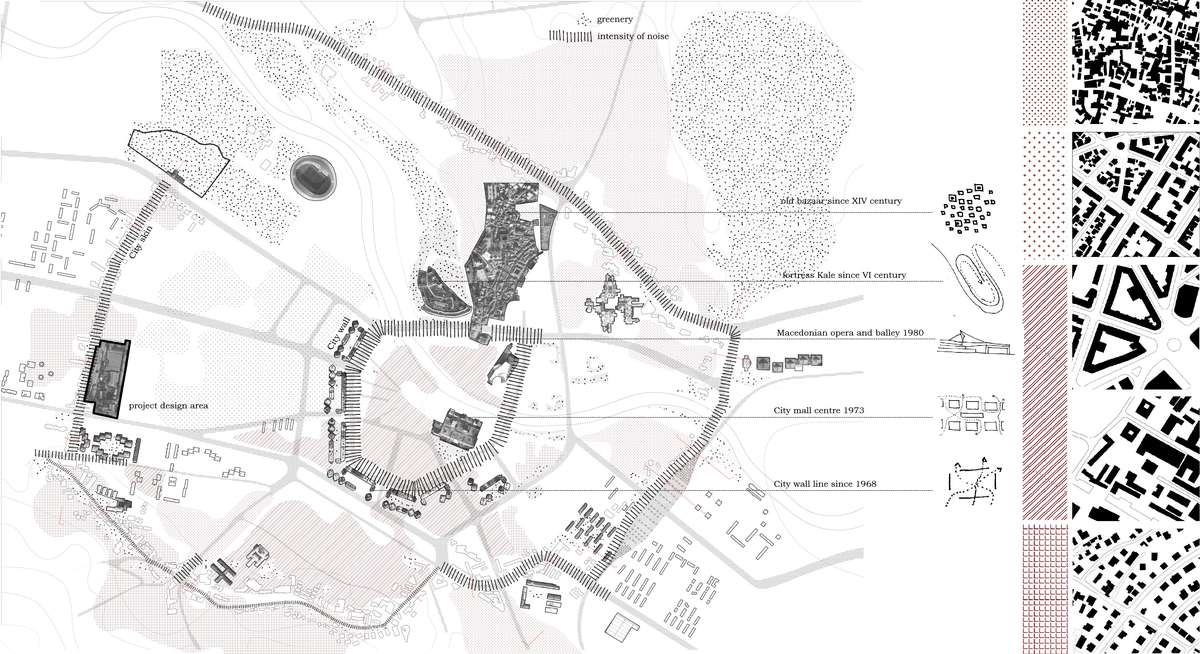
City skin is project proposed line that as an infrastructural line exists. It adopts the idea of being strong defined limit for cars, but presents bridge and connection for pedestrians seen at City wall line. Buildings become new centrality in the different areas. There can begin new residential development with inclusion of plural activities, public spaces and green areas. This way these buildings help the surrounded overbuilt areas to use the public space of the located buildings.

The ground floor of master plan and the section represents the plural presence of activities. At the ground floor of the buildings is included: kinder garden, elementary school, small ambulance, neighborhood theater and cinema, banks and administrative offices, restaurants and cafeterias, municipality rooms and other services. The parallel streets are belonging to the entire city, the courts depressed for 1.5 m from the street level belong primary to the residents of the project.
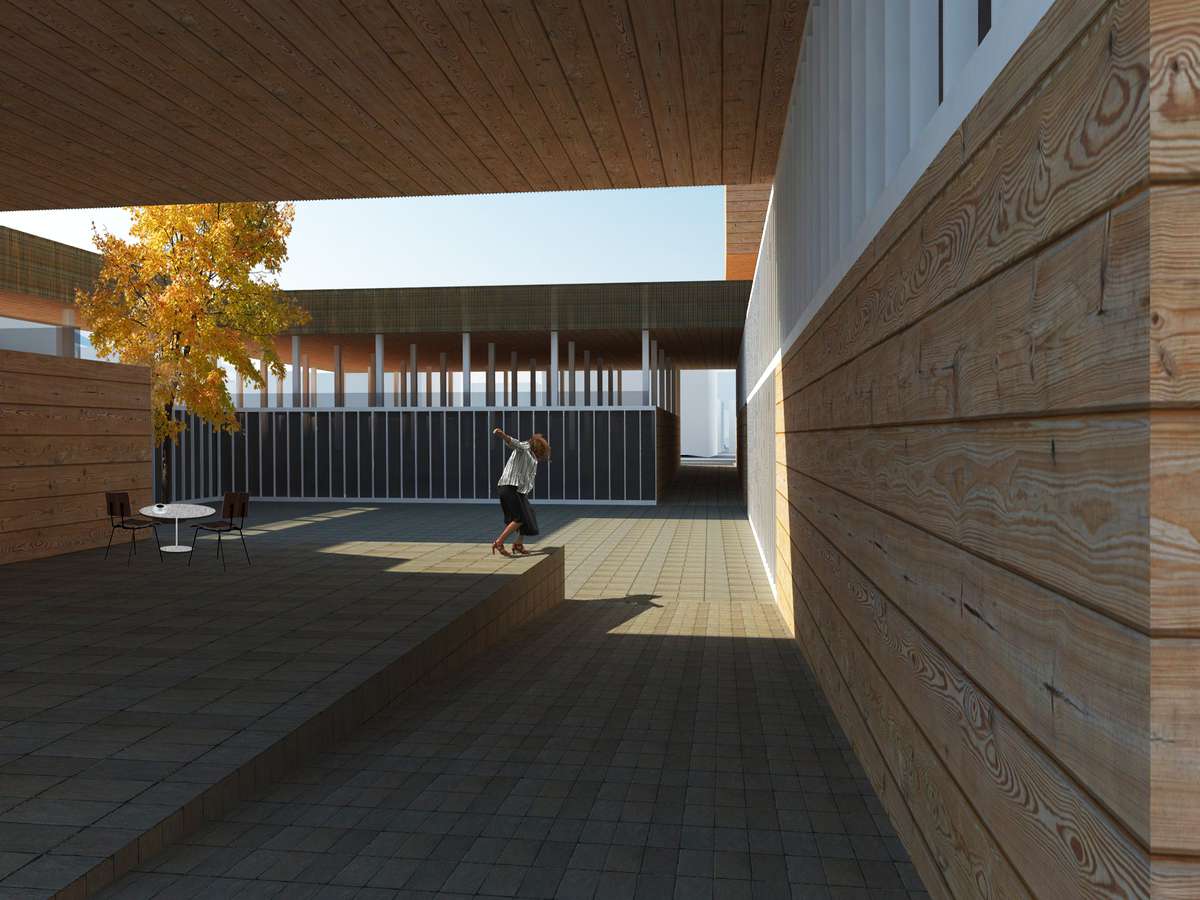
The small piazzas are offering to the people accessibility of public space surrounded with diverse activities where the city becomes mysterious and complex.
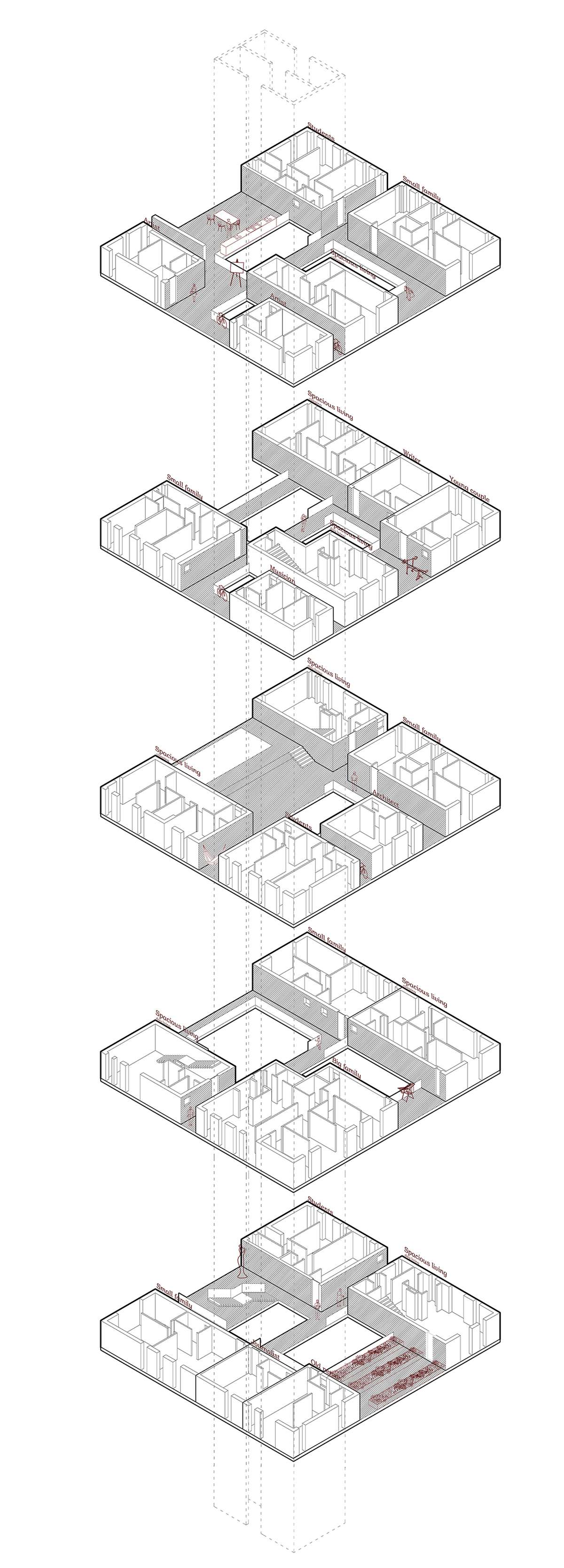
The towers provide different apartments, for permanent and temporary living. They include big, middle and small families, artists, craft workers, students, seasonal workers, tourists and old people apartments. The space in-between apartments is reserved for common activities as kitchens, gyms, TV rooms, gardens and other extension to the housing needs. The block accepts many citizens and provides public, green areas and multiple activities through all the levels in the same time.

The corridors in the residential tower are naturally lighted and are connecting the apartments and the shared terraces with diverse activities. The public space in between apartments is depending solely on people responsibility and feeling of belonging. Those spaces in the future can become physical parts of apartments, regarding the needs of family growth and buildings extension as mentioned in the city problems.
Skopje reckless
Skopje reckless

The project is triggered by common problems in the city of Skopje as a result of the extreme growing in the last 40 years, even more in the last 10 years. The growth is presented in two directions. One is towards inside, in density. The second is by spreading the city perimeter towards uncontrollable directions. During the history by different planners were set plural regulating lines. Regarding historical regulations and existing infrastructure the project proposes city skin line. City skin refers to city wall line, set in 70s by Japanese architect Kenzo Tange after big earthquake competition. This line is physical border for the cars, but on the ground floor is permanent for pedestrians. City skin line adopts this philosophy by selecting important buildings and makes them attractors for new city developments. Starting from city scale to close neighborhood scale, the project addresses the biggest problems in today living reality of the city in order to welcome the future.
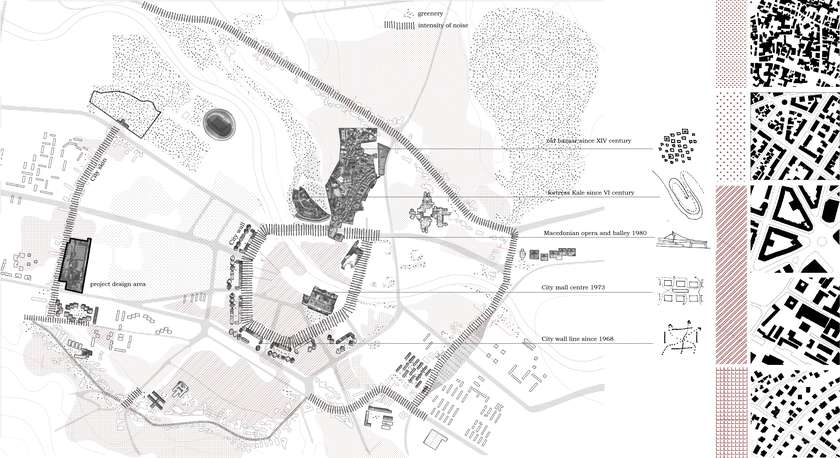
City skin is project proposed line that as an infrastructural line exists. It adopts the idea of being strong defined limit for cars, but presents bridge and connection for pedestrians seen at City wall line. Buildings become new centrality in the different areas. There can begin new residential development with inclusion of plural activities, public spaces and green areas. This way these buildings help the surrounded overbuilt areas to use the public space of the located buildings.
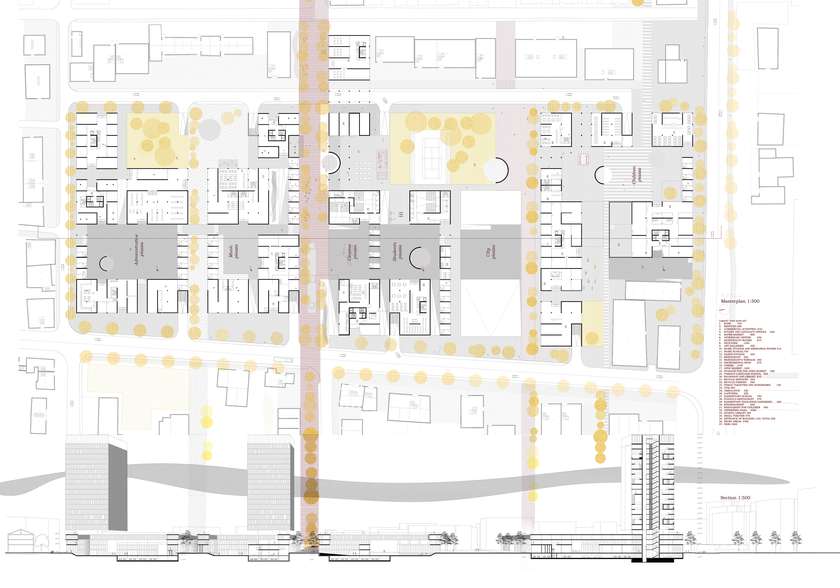
The ground floor of master plan and the section represents the plural presence of activities. At the ground floor of the buildings is included: kinder garden, elementary school, small ambulance, neighborhood theater and cinema, banks and administrative offices, restaurants and cafeterias, municipality rooms and other services. The parallel streets are belonging to the entire city, the courts depressed for 1.5 m from the street level belong primary to the residents of the project.

The small piazzas are offering to the people accessibility of public space surrounded with diverse activities where the city becomes mysterious and complex.

The towers provide different apartments, for permanent and temporary living. They include big, middle and small families, artists, craft workers, students, seasonal workers, tourists and old people apartments. The space in-between apartments is reserved for common activities as kitchens, gyms, TV rooms, gardens and other extension to the housing needs. The block accepts many citizens and provides public, green areas and multiple activities through all the levels in the same time.
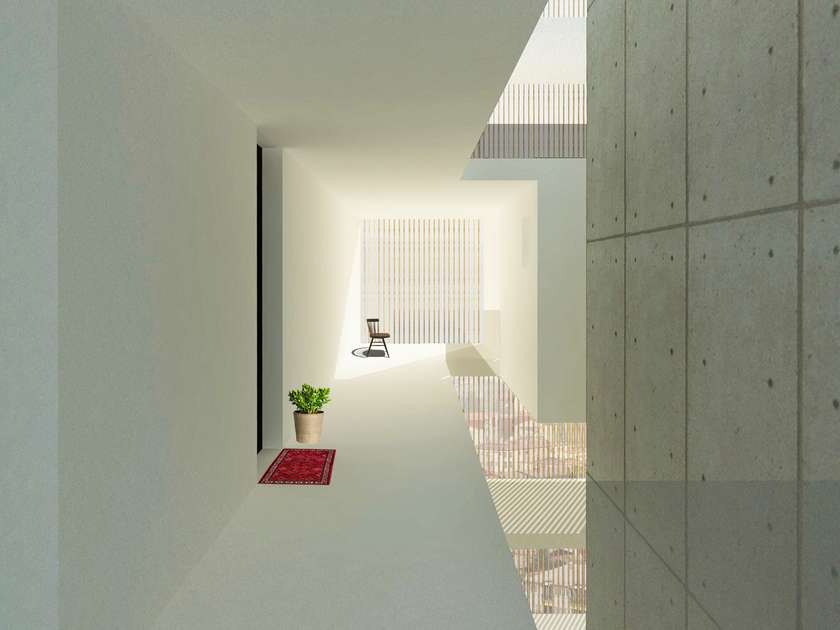
The corridors in the residential tower are naturally lighted and are connecting the apartments and the shared terraces with diverse activities. The public space in between apartments is depending solely on people responsibility and feeling of belonging. Those spaces in the future can become physical parts of apartments, regarding the needs of family growth and buildings extension as mentioned in the city problems.